Calathea Dottie is one of hundreds of Calathea varieties known for its rich purple-black fronds with bright pink midrib and rosy external color markings. Native to the rainforests of Brazil, this striking plant is a common selection for houseplant lovers thanks to its unique color contrast and relatively easy care needs. Here in this manual, we’ll cover all you need to understand about caring for and propagating Calathea Dottie to help you keep your plant looking its best and thriving.
What is a Calathea Dottie?
The Calathea Dottie is a cultivar of the Calathea species, part of the Marantaceae family of plants, originally found in the tropical Americas. It’s best known for its unique and stunning foliage. The leaves are almost black with striking lines of pink, providing an impressive contrast and a burst of color that sets it apart from other houseplants. It gets its name ‘Dottie’ from the dot-like patterns on the leaves. Just like the rest of the Calathea species, the Dottie is also a prayer plant, meaning its leaves move in response to the light it receives throughout the day, a phenomenon known as nyctinasty. This plant’s extraordinary aesthetics and movement turn it into a charming compliment to any houseplant set.[2]

Where do you put Calathea Dottie?
The placement of Calathea Dottie in your home should be carefully considered to ensure optimal growth and health. This plant thrives in areas with high humidity and indirect sunlight, making it an ideal choice for bathrooms or kitchens with a window. Avoid exposure to the sun as it may cause the plant’s vibrant color to fade and cause the leaves to dry out. Similarly, placement near air conditioning units or heaters should be avoided due to the dry air these appliances produce. Remember, Calathea – a jungle herb and prefers environments that mimic its natural habitat—moist, warm, and with plenty of diffused light.[2]
Water & soil needs
Just as crucial as lighting and climate, the water and soil the requirements of your Calathea Dottie should not be overlooked. It likes its soil permanently damp, but not wet. Therefore, it is advisable to irrigate Dottie’s Calathea whenever the top centimeter of ground dries, which usually corresponds to one or two times a week, according to the climate and time of season. Do not let the plant sit in standing water as this could result in rotting of the roots.
As for the potting soil, a good-draining growing mixture is key for healthy growth. A good choice is a peat-based mix that provides the necessary drainage and replicates the plant’s natural environment. To improve soil aeration and further ensure proper drainage, consider incorporating perlite or orchid bark into the mix. For optimal growth, maintaining a slightly acidic pH in the soil is recommended, as the Calathea Dottie thrives in a pH range of 6.0 to 7.5. Regularly check the soil conditions and adjust watering and soil composition as necessary to meet your Calathea Dottie’s water and soil needs.[1]
Humidity & temperature wants for a Calathea Dottie
The Calathea Dottie, like its tropical counterparts, prefers high humidity and warmer temperatures. With a relative air humidity of 50% or higher being ideal for this plant, effective methods of raising moisture content, especially during the dry winter months, are spraying or keeping the flower on a tray of pebbles with water.
In terms of temperature, Calathea dotti flourishes between 65 and 85 deg F (18 and 29 deg C), reflecting its native tropical environment. It is important to note that this plant does not tolerate chilly wind chills or extreme heat, as these conditions can result in curling or wilting of the leaves.Therefore, avoid placing your Calathea Dottie near open windows or doors during colder seasons. Regularly monitor the humidity and temperature of your plant’s environment to ensure it is receiving the conditions it needs to flourish.[1]
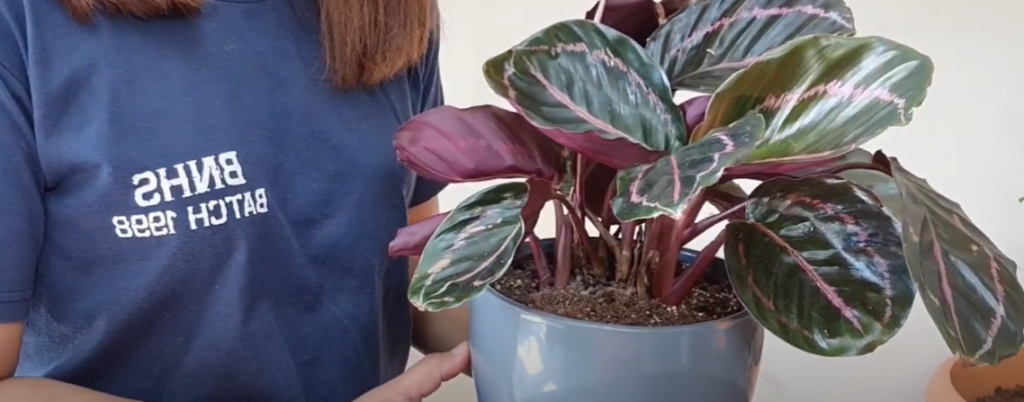
Fertilizer needs & growth rate
When it comes to feeding, Calathea Dottie thrives on frequent fertilization throughout its active growth period in spring and summer. Apply a well-balanced water-soluble houseplant fertilizer that has been doubled in water and applied at intervals of every other watering. It provides the plant with the essential minerals for normal leaf development and vivid color. Steer clear of excessive fertilization as it can result in salt accumulation in the soil, leading to foliage burn.
In terms of speed of development, Dottie’s Calathea is considered a moderately rapidly developing houseplant under optimal conditions. With proper care, it can get up to 2 ft. tall. During the colder months or when conditions are less than ideal, the plant’s growth may slow down. It’s important to adapt your care practices based on the plant’s growth and overall health. Regularly assessing your plant’s appearance—including leaf color, shape, and texture—can provide valuable insights into its well-being and help you adjust your care routine accordingly.[1]
Calathea Dottie propagation by division
The most recommended method for propagating a Calathea Dottie is through division. This process involves separating the plant into multiple sections, each with its own roots and shoots, and re-potting them individually. To propagate your Calathea Dottie by division, follow these steps:
- Carefully remove your Calathea Dottie from its pot. You may need to gently tease the roots to free them from the potting mix.
- Once the plant is out of the pot, inspect the root ball. You should be able to see clear sections where the plant can be divided. Each division should have at least one healthy leaf and a healthy root system.
- Using a clean, sharp knife or garden shears, cut through the root ball to create your divisions. Make sure to sterilize your cutting tool beforehand to prevent the spread of disease.
- After making the divisions, repot each one in a container with fresh, well-draining potting mix. Keep the soil moist but not waterlogged.
- Place the newly potted plant in a warm location with bright, indirect light. Maintain high humidity around the plant, as this will help encourage new growth.
Remember, propagation by division can be a shock to the plant, so it’s normal for the divisions to show signs of stress or slow growth initially. With proper care, your new Calathea Dottie plants should recover and continue to grow. Be patient and give your new plants time to adapt to their new environment.[2]
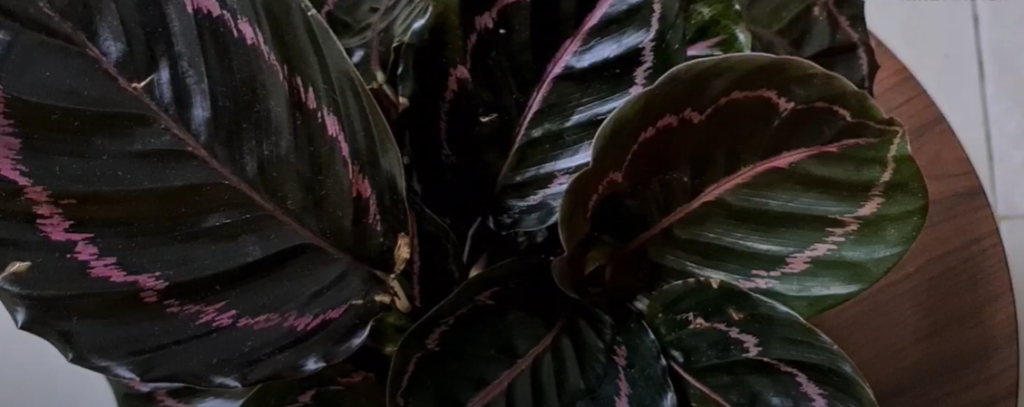
FAQ
How do you propagate Calathea?
Propagating a Calathea plant is a straightforward process that involves division. This method ensures that each new plant has a robust root system and can thrive independently. Here’s a comprehensive step-by-step guide on how to successfully propagate Calathea:
- Start by selecting an appropriate time for propagation. Early spring, just before the growing season begins, is an ideal time for propagating most houseplants, including Calathea. This timing allows the new plants to establish themselves during the active growth period.
- Carefully remove the Calathea plant from its pot, taking care not to damage the roots. Gently tease out the roots and inspect the root ball. Look for healthy offshoots that have at least one leaf and a well-developed root system. These are the divisions that will be separated and potted individually.
- Using a sterilized knife or garden shears, divide the plant into sections. Make sure that each division has at least one healthy leaf and an adequate root system to support its growth. This ensures that each new plant has the necessary resources to thrive.
- Prepare new pots with well-draining, peat-based potting soil for each division. This type of soil provides the right balance of moisture retention and drainage, promoting healthy root development.
- Place each division into its new pot and carefully position it, ensuring that the roots are evenly spread out. Gently backfill the potting soil, making sure it is in contact with the roots. Water the newly potted divisions thoroughly to settle the soil around the roots.
- Find a warm and well-lit area to position the new pots. Avoid direct sunlight, as it can be too intense for the young plants. Instead, choose a spot that offers bright indirect light. Additionally, Calathea plants prefer high humidity, so consider placing the pots in an area with increased moisture levels or use a humidifier to create the ideal environment.
- Maintain regular watering for the newly propagated plants. Keep the soil consistently moist but avoid overwatering, as it can lead to root rot. Monitor the plants closely and adjust the watering frequency as needed. Also, continue to provide care, such as regular fertilization and appropriate temperature conditions, as you would for the parent plant.
Propagation by division can initially cause some stress to the plants, which may result in slower growth. However, with proper care and attention, the new Calathea plants will adapt to their individual pots and resume normal growth. Remember to be patient and give them time to acclimate to their new environment.

By following these detailed steps, you can successfully propagate your Calathea plants and expand your collection with healthy and thriving specimens. Enjoy the process of watching these beautiful plants grow and flourish under your care!
Can you propagate Calathea from leaf cuttings?
Unlike some houseplants, Calathea plants, including the Calathea Dottie, are not typically propagated from leaf cuttings. The leaf cutting method involves snipping off a leaf and placing it in water or soil to develop roots. However, this method is not effective for Calathea as the cut leaves tend not to grow a new plant. Instead, propagation of Calathea is most successfully achieved by division, as this ensures the new plant has a robust root system to support its growth.
When dividing a Calathea plant, the process involves carefully separating the plant into smaller sections, each with its own set of roots and leaves. This method allows for the creation of multiple new plants, which can be potted individually and nurtured to thrive. By dividing the plant, you are providing each new plant with a strong foundation for growth and development.
Therefore, while it’s feasible to try propagating Calatheas from leaf cuttings, the success rate is significantly lower and it’s not the recommended propagation method for these plants. Opting for division as the propagation method will yield better results and increase the chances of successfully growing new Calathea plants.
How do you grow Calathea Dottie?
Growing Calathea Dottie successfully requires careful attention to its specific needs. Here are some detailed steps to ensure the healthy growth of your Calathea Dottie:
- Light: Calathea Dottie thrives in low to medium light conditions. It prefers bright, indirect light, but direct sunlight should be avoided as it can cause the leaves to fade and lose their vibrant color. Placing your plant near a north-facing window where it can receive gentle, filtered light is an ideal location.
- Water: Maintaining the right level of moisture is crucial for a healthy Calathea Dottie. Keep the soil consistently moist, but make sure it is not waterlogged. Overwatering can lead to root rot, while underwatering can cause dry, curled leaves. Water your Calathea Dottie when the top 1-2 inches of soil feel dry to the touch, ensuring thorough watering without letting it sit in excess water.
- Humidity: High humidity is essential for the well-being of a Calathea Dottie. Consider placing your plant in a bathroom or kitchen where humidity tends to be naturally higher. Alternatively, you can use a humidity tray or a humidifier to increase moisture levels around the plant. Regular misting of the leaves can also help maintain the desired humidity.
- Temperature: Calathea Dottie thrives in temperatures between 65-85°F (18-29°C). It is important to avoid exposing the plant to cold drafts or sudden temperature changes, as this can lead to leaf curling or wilting. Keeping it in a stable and moderate temperature environment will promote healthy growth.
- Soil: When potting your Calathea Dottie, choose a well-draining, peat-based potting mix. Good drainage is essential to prevent waterlogging and root rot. A mix that retains moisture while allowing excess water to drain away will help create an ideal growing environment.
- Fertilizer: Feed your Calathea Dottie during the growing season (spring and summer) with a balanced, water-soluble houseplant fertilizer. Dilute the fertilizer to half strength to avoid overfertilization. Applying fertilizer once a month will provide the necessary nutrients for healthy growth and vibrant foliage.
- Pruning: Regular pruning is beneficial to maintain the overall appearance and health of your Calathea Dottie. Trim any brown or yellow leaves using clean and sharp pruning shears. This not only keeps the plant looking its best but also encourages new growth and prevents the spread of any potential diseases.
Remember, patience and regular monitoring are key when growing a Calathea Dottie. Regularly check your plant’s appearance and adjust your care routine as necessary based on its specific needs. With the right care and attention, your Calathea Dottie can be a long-lasting and attractive addition to your indoor plant collection, adding beauty and a touch of nature to your space.
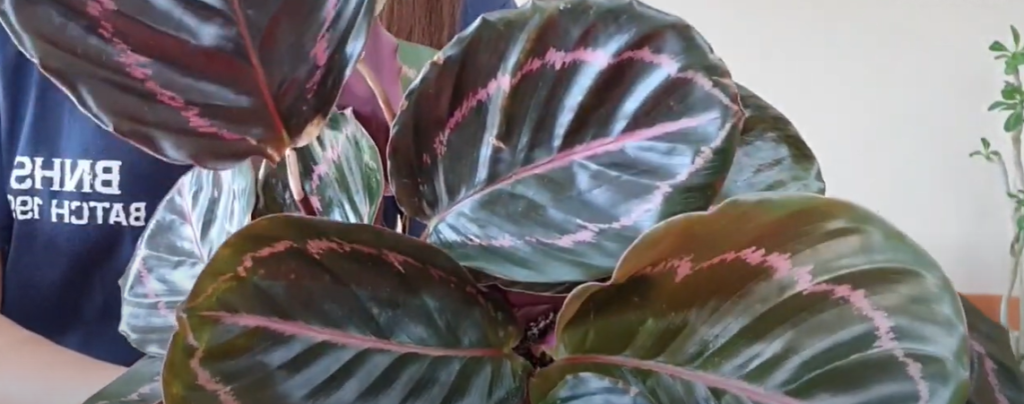
Can Calathea Dottie grow in water?
While some houseplants can thrive in a water-based environment, it’s important to note that the Calathea Dottie is not one of them. This beautiful plant is a terrestrial species, naturally adapted to grow in soil and rely on a soil-based medium for its roots to properly absorb nutrients and moisture. Attempting to grow a Calathea Dottie in water, also known as hydroculture, can have detrimental effects, such as root rot and ultimately leading to the demise of the plant.
To ensure the best chances of success with your Calathea Dottie, it is recommended to opt for a well-draining potting mix that is peat-based. This type of medium will provide the necessary balance of moisture retention and sufficient aeration for the roots. Remember to keep the soil consistently moist, but be cautious not to overwater and cause waterlogging.
While it might be tempting to experiment with water culture for this particular plant, it is not advisable. By following these guidelines and providing the appropriate soil-based environment, you can help your Calathea Dottie thrive and showcase its stunning foliage for years to come.
Why do calatheas not like tap water?
Calatheas, including the Calathea Dottie, are known for being quite particular about the water they receive. The reason behind their sensitivity to tap water lies in the chemical content present in most municipal water sources. These additives, such as chlorine and fluoride, are meant to ensure the safety of human consumption. However, these chemicals can have adverse effects on delicate plants like Calatheas, leading to leaf damage and hindering their overall growth.
In addition to the chemical composition, another factor that affects Calatheas is the pH level of the water. These plants thrive in slightly acidic conditions, while tap water tends to lean towards being alkaline. Consequently, the disparity in pH can cause stress to your Calathea, resulting in the appearance of brown tips or edges on its leaves.
To mitigate these issues, there are a few steps you can take. Consider using distilled water or rainwater as an alternative to tap water when watering your Calathea. These sources are naturally free from the chemicals found in tap water and provide a more suitable pH level for your plant. Alternatively, if using tap water is unavoidable, you can let it sit out overnight before watering your Calathea. This allows some of the harmful chemicals to evaporate, making the water more plant-friendly.
By being mindful of your Calathea’s water preferences and taking these precautions, you can ensure its health and promote optimal growth.
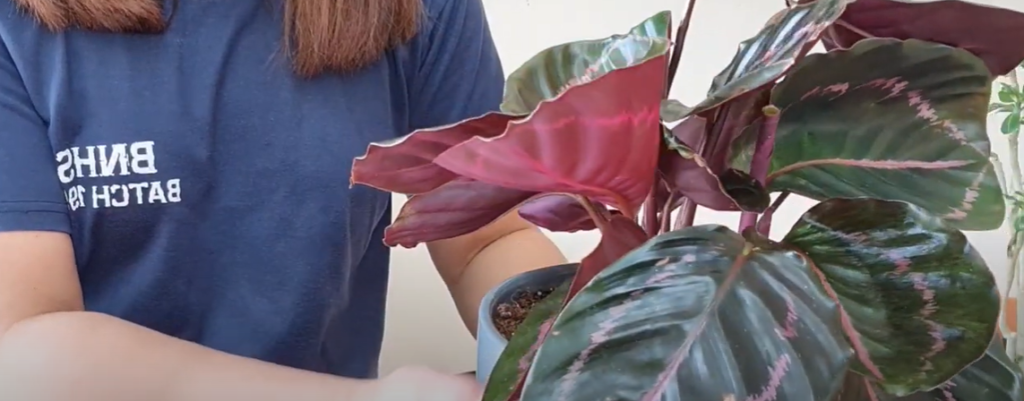
Is Calathea Dottie easy to grow?
Calathea Dottie, also known as the Rose-Painted Calathea, is a stunning and exotic plant that captivates with its unique beauty. While it may be considered a bit challenging to grow, especially for beginners, the effort is well worth the reward.
To ensure the optimal growth of Calathea Dottie, it is important to pay attention to its specific care requirements. This plant thrives in bright, indirect light, making it perfect for placement near a north or east-facing window. It also prefers well-draining soil that retains some moisture without becoming waterlogged.
In addition to light and soil, humidity is crucial for the well-being of Calathea Dottie. This plant loves high humidity, so misting its leaves regularly or placing it near a humidifier can help create the ideal environment. Maintaining a temperature range of 65-80°F (18-27°C) is also important for its growth and overall health.
When it comes to watering, Calathea Dottie prefers consistently moist soil but not soggy conditions. It is best to water when the top inch of soil feels dry to the touch, ensuring thorough watering while allowing any excess water to drain away.
Fertilization is another aspect to consider in the care of Calathea Dottie. During the growing season, which typically spans from spring to early fall, using a balanced houseplant fertilizer every two to four weeks can provide the necessary nutrients for healthy growth.
Being attentive to your Calathea Dottie’s appearance is crucial for its well-being. Any changes in leaf color, brown edges, or drooping leaves may indicate that adjustments in care are needed. Adjusting watering, light exposure, or humidity levels accordingly can help maintain its health and vitality.
In summary, while growing Calathea Dottie may require a bit more effort and attention to detail, the reward is a stunning addition to your indoor plant collection. The vibrant and patterned leaves of this plant are sure to impress and bring a touch of tropical beauty to your home. Embrace the challenge, and with patience and care, you can successfully cultivate a thriving and vibrant Calathea Dottie.
Useful Video: Calathea Dottie | Complete Care Tips
Conclusion
Caring for a Calathea Dottie, also known as the Rose-Painted Calathea, may initially appear daunting due to its specific needs. However, with patience, attention to detail, and a little bit of plant know-how, this endeavor becomes entirely achievable and rewarding.
The key to successful growth lies in understanding the plant’s natural habitat, which is the tropical rainforests of South America. To replicate these conditions as closely as possible, it is crucial to provide the Calathea Dottie with low to medium light, mimicking the dappled sunlight that filters through the dense forest canopy. This plant thrives in indirect sunlight and should be placed away from direct exposure to harsh rays.
In addition to proper lighting, maintaining high humidity levels is essential for the Calathea Dottie’s well-being. A humidifier or pebble tray can be used to increase the moisture in the surrounding air, creating a comfortable environment that mimics its native habitat. Regular misting or grouping the plant with other humidity-loving plants can also help in maintaining adequate moisture levels.
When it comes to watering, it is crucial to strike the right balance. Overwatering can lead to root rot, while underwatering can cause the leaves to curl and dry out. The ideal approach is to water the Calathea Dottie when the top inch of the soil feels slightly dry. Use filtered or distilled water to avoid the negative effects of tap water that may contain harmful additives or excessive alkalinity.
To ensure proper drainage and prevent waterlogged soil, use a well-draining potting mix. A mix of peat moss, perlite, and orchid bark can provide the necessary aeration and moisture retention for the plant’s roots.
While the Calathea Dottie may require a little more care and attention compared to some other houseplants, the rewards are well worth the effort. Its striking beauty, with vibrant colors and unique patterns on its leaves, can transform any indoor space into a haven of nature’s artistry. Whether you are an experienced plant enthusiast or a beginner, this magnificent indoor plant will surely captivate your heart and add a touch of elegance to your home or office.
References:
- https://www.plantcarefully.com/calathea-dottie/
- https://www.bybrittanygoldwyn.com/calathea-dottie/



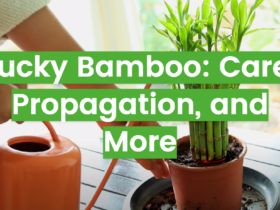
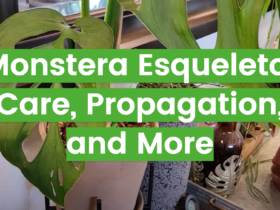
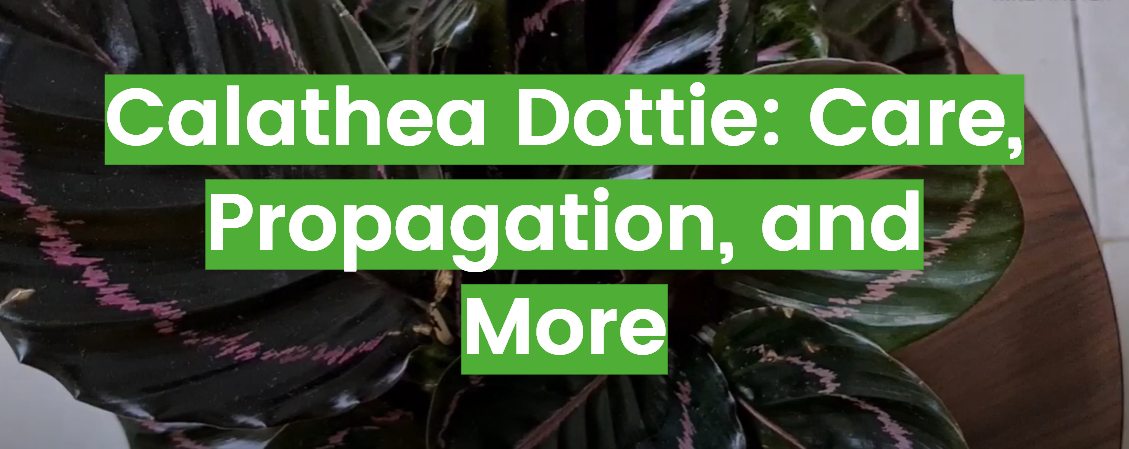
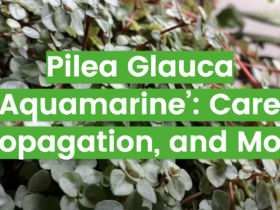
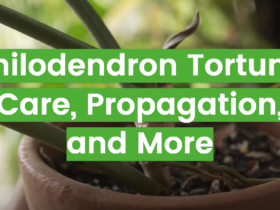

Leave a Review